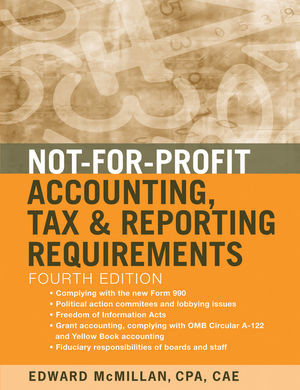

Most ebook files are in PDF format, so you can easily read them using various software such as Foxit Reader or directly on the Google Chrome browser.
Some ebook files are released by publishers in other formats such as .awz, .mobi, .epub, .fb2, etc. You may need to install specific software to read these formats on mobile/PC, such as Calibre.
Please read the tutorial at this link: https://ebookbell.com/faq
We offer FREE conversion to the popular formats you request; however, this may take some time. Therefore, right after payment, please email us, and we will try to provide the service as quickly as possible.
For some exceptional file formats or broken links (if any), please refrain from opening any disputes. Instead, email us first, and we will try to assist within a maximum of 6 hours.
EbookBell Team

4.0
36 reviewsCombining the proven guidance of the previous, bestselling edition with all of the latest regulatory information, Edward McMillan delivers a one-stop reporting resource for not-for-profits in Not-For-Profit Accounting, Tax, and Reporting Requirements, Second Edition.
McMillan's step-by-step guide helps your not-for-profit apply for tax-exempt status, handle IRS audits, set up a wholly owned taxable subsidiary, anticipate tax implications of lobbying expenses, and perform a host of other functions.
A peerless reference for this dynamic field, Not-for-Profit Accounting, Tax, and Reporting Requirements, Second Edition gives your nonprofit a straightforward guide to simpler financial structure and reporting obligations.Content:
Chapter 1 Classification of Tax?Exempt Organizations (pages 1–7):
Chapter 2 Financial Responsibilities of Not?for?Profit Board Members (pages 9–14):
Chapter 3 The Basics of Form 990, Form 990?EZ, and Form N (pages 15–24):
Chapter 4 Tax on Unrelated Business Income and Form 990?T (pages 25–32):
Chapter 5 Other IRS Issues (pages 33–38):
Chapter 6 Disclosure of Information (pages 39–45):
Chapter 7 Conditions of Employment Agreement (pages 47–53):
Chapter 8 Wholly Owned Taxable Subsidiaries (pages 55–57):
Chapter 9 Internal Revenue Service Audits (pages 59–67):
Chapter 10 Developing Strong Internal Controls and Documenting a Fraud Action Plan (pages 69–85):
Chapter 11 Using CPA Firms and Understanding Their Functions (pages 87–110):
Chapter 12 Grant Accounting and Auditing (pages 111–126):
Chapter 13 Implications of Lobbying Expenditures (pages 127–139):
Chapter 14 Campaign Contributions, PACs, and 527s (pages 141–147):
Chapter 15 Internal Audit Committees (pages 149–152):
Chapter 16 The Accounting Policies and Procedures Manual (pages 153–157):
Chapter 17 Restricted?Fund Transactions (pages 159–165):
Chapter 18 The Basics of Intermediate Sanctions (pages 167–169):
Chapter 19 The Basics of Not?for?Profit Accounting and Financial Statements (pages 171–177):
Chapter 20 Private Foundations (pages 179–182):